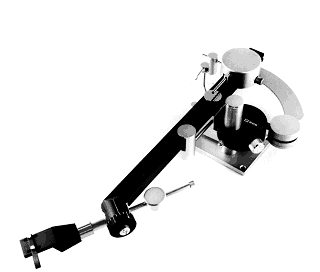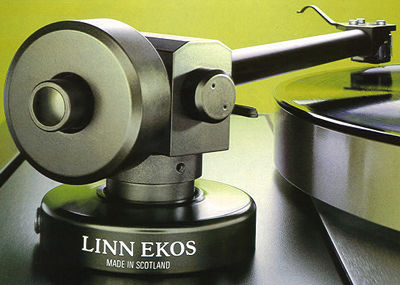The Rega R200 was the best cheap tonearm in the world until August 1983. It was an S-shaped, Japanese-sourced variation of the mid-range Lustre GST-1 that delivered good results for the £46 price tag. But then along came an arm with such an incredible price/performance ratio that the poor S-shaped Rega was forgotten about. The RB300 was on its way.
It was so unlike everything else that it essentially rewrote the book. It was a great example of Linn’s’maximum stiffness’ criterion, with a tapered, one-piece aluminium cast arm tube with no connections between the headshell and pivot. The bearing gimbal was a robust casting with a threaded stem and locknut, and the bearings were of good quality – the same as those used in Linn’s Ekos later. The arm’s friction was incredibly low, allowing it to track even the best cartridges. Even the counterweight was revolutionary, made of thick tungsten alloy with the shortest possible diameter and hence lowest moment of inertia.
In a number of aspects, the new £90 arm matched or outperformed pricey super-arms of the period. Its most notable feature was its neutrality, particularly in the mid-band, which made Linn’s Ittok (at £253) appear colored. The press reacted well, with the general consensus being that it was one of the best guns available at any price. However, as the media frenzy faded, critics emerged: people began to notice how chilly it was, and how rhythmically freezing it was. It also didn’t have the finest bass or the most stretched treble in the industry. Even still, the arm’s harshest detractors were competitors whose sales it was taking!
Soon later, the RB250 arrived. It was essentially a simplified RB300 that allowed Rega to offer a new tonearm at a low cost. The removal of the RB300’s tracking force spring meant that the stylus force had to be adjusted by turning the counterweight. The revised model had a brass base rather than stainless steel, a plastic rear end stub rather than stainless steel, and a mild steel counterbalance. The bearing assembly also differed from the RB300 in that it was held on both sides rather than just one. Finally, the tolerances on the bearings were lowered somewhat.
The RB300 is a fantastic secondhand buy today. It already sounds great, works with a wide range of turntables, and can track a high-ish end moving coil cartridge. But there’s more — a slew of mods from firms like Origin Live and Audio Origami put it closer to – and, in some ways, even beyond – SME Series V territory. It’s a true “cheap high end” product that’s also one of the most important tonearms of its generation, if not all time.







